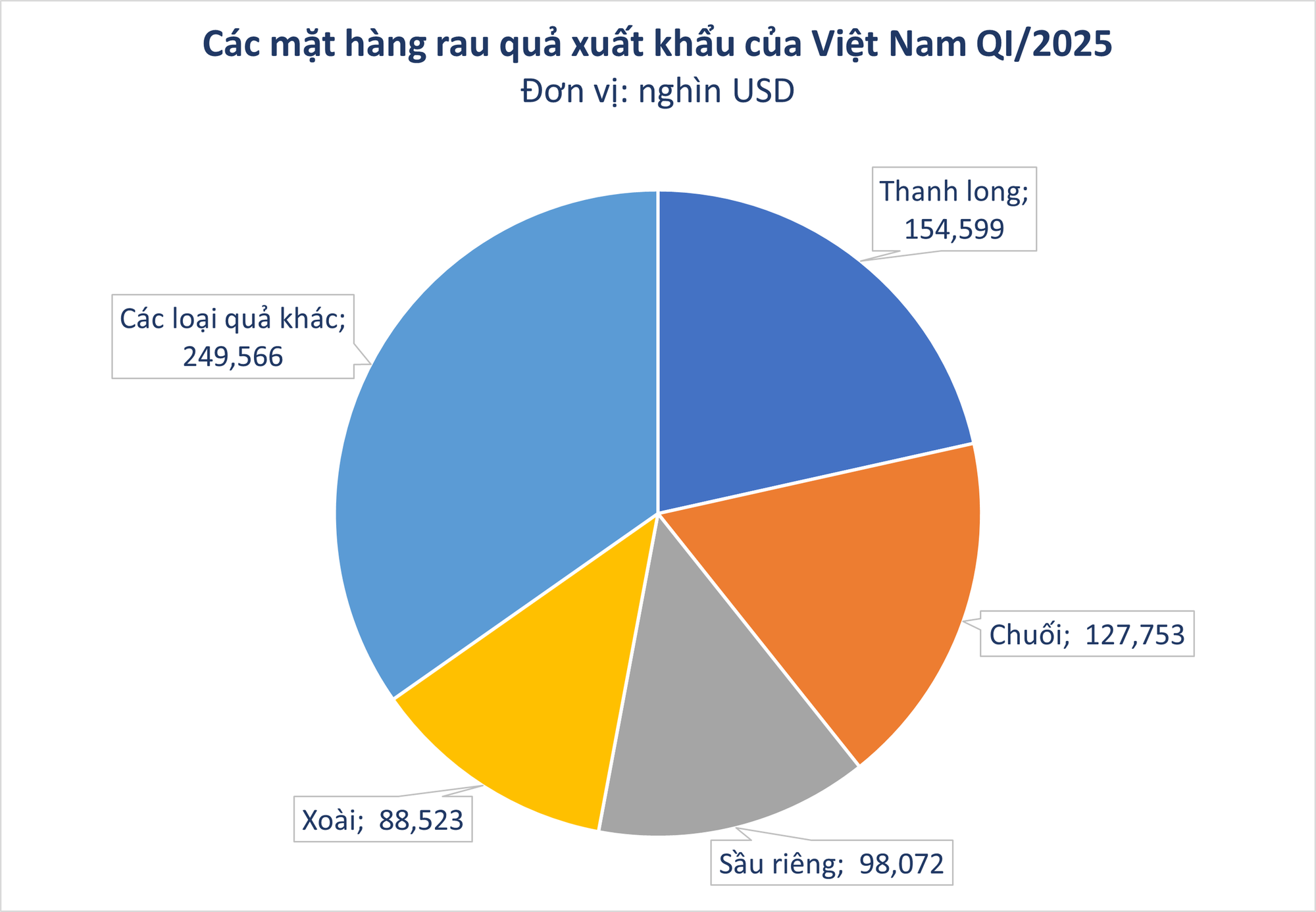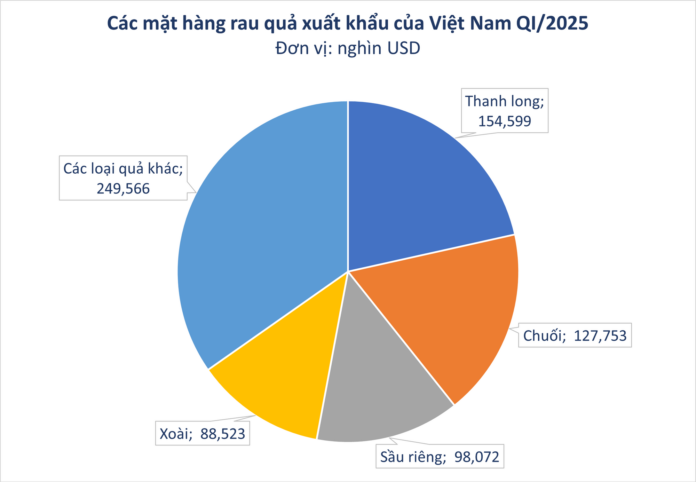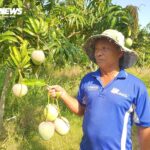In Q1 of 2025, Vietnam’s mango exports brought in over $88.5 million, a 15.9% growth compared to the same period in 2024. The market share also increased from 5.9% in Q1/2024 to 7.61% in Q1/2025. This commodity ranks only after dragon fruit, durian, and bananas.
Vietnamese mangoes are renowned for their sweet flavor, thick flesh, minimal fiber, and distinctive aroma. Apart from fresh mango exports, Vietnam also manufactures and exports processed mango products such as dried mangoes, mango puree, and canned mangoes to cater to the demands of discerning markets.
Vietnamese mango products have reached 30 countries, especially demanding markets like Japan, the US, and the EU, contributing to the development of Vietnam’s agricultural industry. As a result, Vietnam has become the 13th largest mango exporter in the world.

Mangoes are one of the main fruits exported to the Chinese market. Thanks to their affordable price and delicious taste, Vietnamese mangoes are considered by the Chinese to be superior to those from Thailand, Myanmar, and Cambodia. In 2024, Vietnam was one of the largest mango suppliers to the billion-people market.
According to a Chinese agricultural expert on the Q2d website, Vietnam has favorable natural conditions for the successful cultivation of mangoes, with minimal pests and diseases, and high yields; low labor costs keep procurement prices competitive. Moreover, the ripening periods of Vietnamese mangoes and those from Hainan (China’s most famous mango-growing region) and Guangxi differ.
Hainan mangoes are typically harvested from April to August, Guangxi mangoes from early June to mid-September, while Vietnamese mangoes ripen from March to May. Therefore, at this time, China often imports large quantities of Vietnamese mangoes, mainly of the following varieties: Green mango, Australian mango, and Cat Hoa Loc mango.
Notably, Mr. Daniel J. Kritenbrink, former US Ambassador to Vietnam, shared his first experience of enjoying mangoes in Can Tho City in 2018. “It was the best mango I’ve ever tasted. I would say that this type of mango is one of the best in the world,” expressed Mr. Daniel.
Earlier this March, the first batch of green-skinned mangoes from Tien Giang Province was exported to the US, marking not only a new milestone in the agricultural industry but also contributing to enhancing the value of Vietnamese agricultural products in the international market.
According to the Plant Protection Department (Ministry of Agriculture and Rural Development), the country’s current mango-growing area exceeds 114,000 hectares, with an output of 700,000-800,000 tons/year, with the majority of the output coming from the Mekong Delta region.
The provinces with the largest mango-growing areas and outputs are Son La, Dong Thap, An Giang, and Dong Nai. Of these, mangoes are most extensively cultivated in the Mekong Delta, spanning 49,900 hectares. In Dong Thap, the mango-growing area currently exceeds 14,000 hectares, with an output of nearly 140,000 tons/year.
The Ministry of Agriculture and Rural Development aims to expand the country’s mango-growing area to 140,000 hectares by 2030, with a production volume of 1.5 million tons and an export turnover of $650 million.
Mango Prices Plummet to 1,000 – 5,000 VND per kg, Devastating Khanh Hoa Farmers
The Australian mango season is in full swing in Cam Lam district, Khanh Hoa province, but farmers are facing a sharp drop in prices. The fruit, which once fetched up to 25,000 VND per kilogram, now sells for a mere 1,000-5,000 VND per kilogram. This significant price decline has left many farmers demotivated and disinterested in harvesting their crops.

















